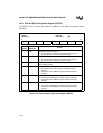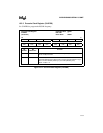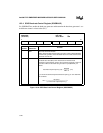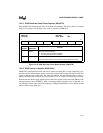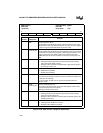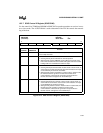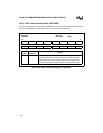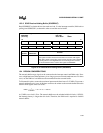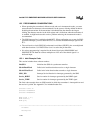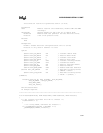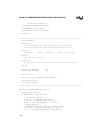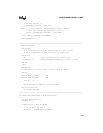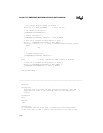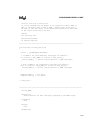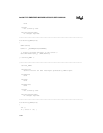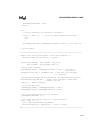
Intel386™ EX EMBEDDED MICROPROCESSOR USER’S MANUAL
13-26
13.5 PROGRAMMING CONSIDERATIONS
• When operating the transmitter in Master mode, and not in Autotransmit mode, you must
ensure that the last character to be transmitted is in the process of being shifted out before
disabling the transmitter. If the transmitter is disabled before the character has begun
shifting, the character remains in the shift register and is shifted out when the transmitter is
re-enabled. At high baud rates this can be a problem and using the Autotransmit mode is
recommended.
• The SSIO interrupt line is multiplexed with INT5. When configuring your system for SSIO-
generated interrupts, you must clear INTCFG.1 to connect the SSIO interrupt signal to the
ICU.
• The serial receive clock (SRXCLK) and transmit serial data (SSIOTX) pins are multiplexed
with other functions. Use PINCFG bits 0 and 1 to select the pin functions.
• No register programming is required for the shared signal pairs RI1#/SSIORX and
DSR1#/STXCLK. Both do not have multiplexers since one of the shared signals is a
dedicated input.
13.5.1
SSIO Example Code
This section includes these software routines:
InitSSIO Initializes the SSIO for synchronous transfers
SSerialReadWord Polled serial read function that receives a single character
SSerialWriteWord Polled serial write function that transmits a single character
SSIO_ISR Interrupt Service Routine for interrupts generated by the SSIO
Service_RHBF Service routine for interrupts generated by the RHBF signal
Service_THBE Service routine for interrupts generated by the THBE signal
The final code example shows an SSIO transfer in which the transmitter is interrupt-driven and
the receiver is polled. See Appendix C for included header files.
#include <conio.h>
#include “80386EX.h”
#include “EV386EX.h”
WORD value = ‘1’;
BYTE Control;
BYTE poll;
/*****************************************************************************
InitSSIO:
Description:



